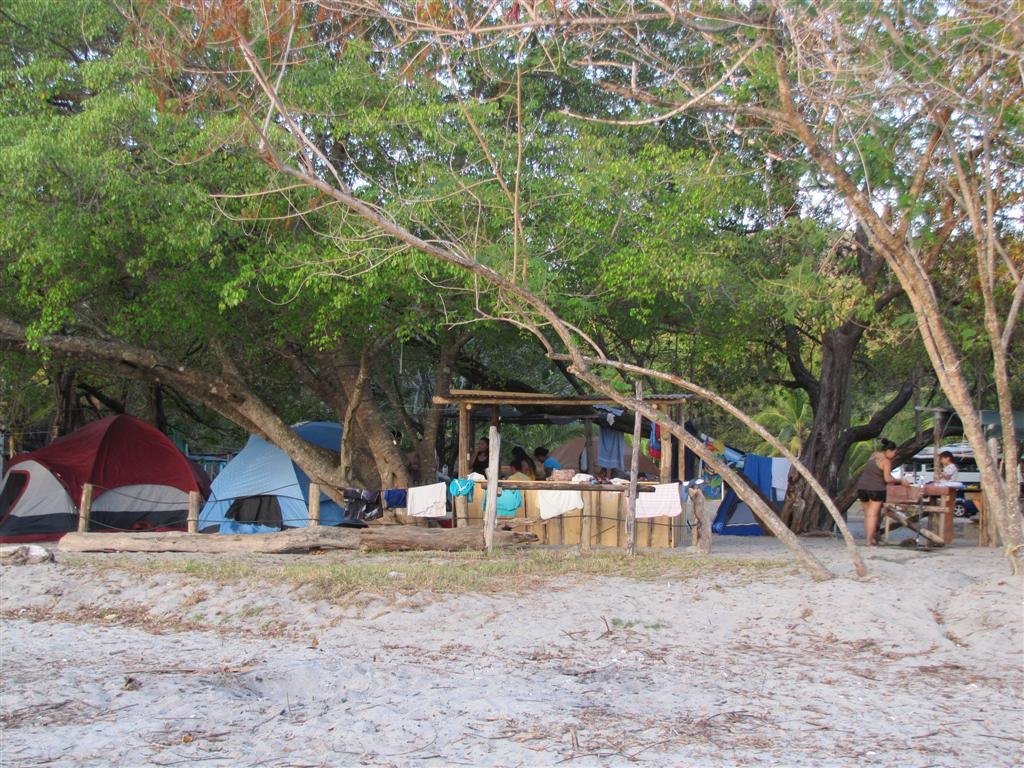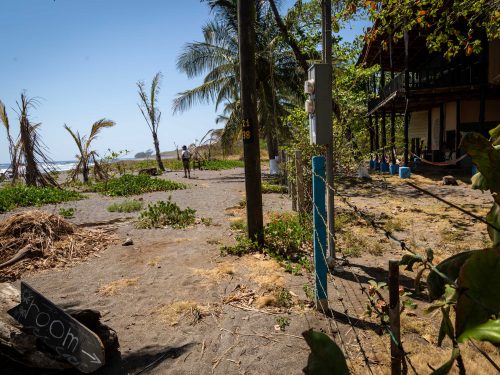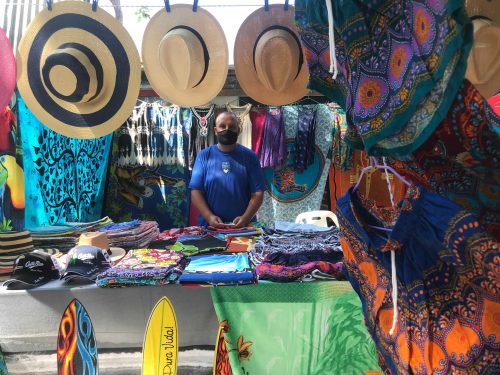
With slow progress being made on the new Samara-Carrillo regulatory plan, the situation for those who live, own property or hold concessions in the Maritime Land Zone (ZMT-Zona Marítimo Terrestre) is still unsure.
VON interviewed Juan Carlos Oviedo Quesada, head of the maritime land zone department for the Municipality of Nicoya and coordinator of the regulatory plan commission about the situation in Samara.
Oviedo reported that although the proposed regulatory plan for the canton is stalled because the companies hired to prepare the plans omitted some things, the Samara-Carrillo coastal regulatory plan being prepared by the Costa Rican Tourism Institute (ICT) is making progress. Previously the plan was rejected by the National Institute of Housing and Urbanization (INVU- Instituto Nacional de Vivienda y Urbanismo) because of the lack of the environmental fragility indexes (IFEs), but the IFEs have been presented now and in February the plan was presented to the National Environmental Technical Secretary (SETENA- Secretaría Técnica Nacional Ambiental) for review. Once SETENA approves the environmental viability of the plan, it must then be sent to INVU again for approval and then a public audience will be scheduled to present it to the community.
Irregular Constructions in Samara
In the meantime, many who currently inhabit the ZMT have to hold off on certain construction projects. Also pressure is being put on the legislative assembly to approve legislation that would alleviate some of the problems caused by lax administration of the maritime zone in the past. One such law project that was given the green light in February by the Permanent Tourism Commission to enter into discussion in the assembly would regulate existing constructions in the restricted zone, allowing them to remain in the maritime zone as long as adhere to the current coastal regulatory plan. Oviedo estimated that there are about 35 irregular constructions in Cangrejal of Samara, some of which have concessions.
One place facing these problems is the language school Intercultura. In addition to difficulties renewing the school’s concession, Oviedo explained that the municipality granted construction permits for the language school to without advising them about a regulation that requires a minimum space of three meters around buildings in the maritime zone. Laura Ellington, founding director of the language school, said they have been struggling to get an extension for the concession on one of their lots approved by ICT since 2006. In the meantime, they can’t do any new constructions and have had to turn international students away because they are operating at capacity. Ellington said the facility was built in 2004 when the 3-meter rule wasn’t being applied and nobody said anything about it, but now ICT is saying that the rule must be enforced. Aside from this, lawyer Erwin Alan Seas indicated that Intercultura was built on a parcel designated as a residential lease zone in the current regulatory plan, so he questions why the municipality authorized the construction of a private school there, and he said that a denunciation about this has been made before the Nicoya prosecutor’s office and the contentious court.
La Aloha Camping Operating Next to Mangroves
Another business along Samara Beach that continues to receive denunciations from neighbors concerned about possible pollution of the maritime zone is La Aloha Camping. Domingo Arias Bonilla, the proprietor, who lives in Nicoya and says he has possessed the property in Samara for 40 years, said, “They always denounce me. They would have already demolished (the business) if it had problems.” Arias stated that his land is not in the maritime zone and also affirmed that he has a business permit and public land registration. As proof of a business permit, Arias provided an account statement from the municipality of Nicoya in the name of Javier Naranjo Vargas for activities of a pool hall, restaurant and camping, and Xiomara Cubillo Diaz in the municipal permits department confirmed that the license for Camping Aloha is up to date.
Regarding land registration, Arias provided VON with a copy of a letter from the municipal maritime land zone department dated September 1, 2009 and signed by Oviedo that states that the property is protected by the registrations 30603-000 and 67088-000 and therefore should be viewed as private lands until the opposite is demonstrated administratively. When consulted about the veracity of what is affirmed in the letter from September 2009, Oviedo said it was an error of the office written in good faith under the assurance that Arias was going to present the land title. However, he affirmed that Arias has never presented the title for the land in question, so three years later the department is again pursuing the case in order to clarify if it is private land or if it is state property, in which case a concession would be required.
On March 14 of this year, Oviedo issued an official letter to Arias assuring that the land in question is in the maritime zone and that he needs to present a legitimate title accrediting the property as private. The letter also mentions the lack of records of construction permits and informs Arias that the case would be transferred to the municipal auditor for further investigation. Oviedo also issued a letter addressed to the municipal auditor, Gilberto Lizano Elizondo, requesting investigation of the case. In addition, Aloha Camping has been denounced on various occasions before MINAET (The Ministry of Environment, Energy and Telecommunications) and the Ministry of Health. Miguel Jimenez Guevara, an inspector for MINAET in charge of wildlife, said that the most recent denunciation was received on January 8 and an inspection took place the same day. They found garbage next to the mangroves as well as burned branches, and the case has been submitted to the fiscal court. Arias explained that the burning was not done by him or his employees but rather by a group that was collecting all of the garbage along the beach and the estuary and assured that he has protected the mangroves.
A report issued by Gabriel Sotelo Gonzalez from the Ministry of Health in January of 2012 noted that the bar, restaurant and camping Aloha were shut down in January of 2009. Other inspections were performed in August of 2009 and May of 2010 in which the business was not functioning. However, on a visit on July 30, 2010 the bar was found to be active and a denunciation was filed consequently ordering the suspension of activities on the property. Five more inspections during 2011 found the establishment not functioning and during visual inspections did not observe residual waters being poured into the estuary or sea. Several times, VON requested information from Xinia Cordero Vargas, director of the Ministry of Health in Nicoya, regarding the most recent inspection of Camping Aloha, but as of close of edition, Cordero had not provided the requested information.







Comments